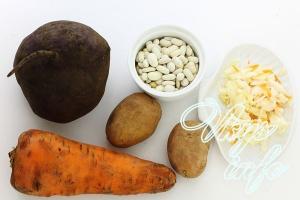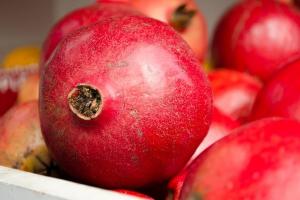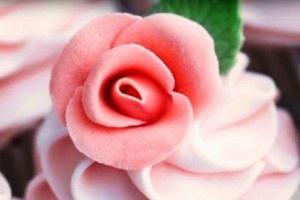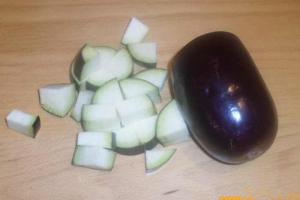In the gardens of the middle zone, one of the most common flowers is the chrysanthemum. It is valued for its unpretentiousness, the absence of the need to sow it again every spring, and its long flowering period.
Especially popular are young spherical chrysanthemums, caring for which is no more difficult than other varieties. They are almost never cut, but are grown mainly for balconies and loggias. How to provide comfortable conditions such a flower?
Why are these flowers so popular among gardeners?
But these flowers won the hearts of gardeners not only with their fabulous appearance: Unlike other varieties, they often bloom even at the end of August, delighting flower growers all autumn. Thanks to their unique genetic properties and constant selection, they do not require any pruning or shaping at all: the bush acquires a spherical shape completely independently. But some experts say that it is more useful to pinch the tops when about four pairs of leaves appear on them. However, in 90% of cases this event is not necessary, since the spherical chrysanthemum will acquire the necessary shape without your intervention. In addition to the vegetable garden and garden, the bushes of this amazing plant they feel great even on the windowsill, being planted in flower pots. In a word, they can become a real decoration of the area everywhere, attracting admiring glances.
The only obstacle for beginners may be their wintering, which requires certain conditions and care.
Features of growing spherical chrysanthemums
Planting and propagation of this plant is carried out by dormant rhizomes or seedlings that have already begun to function, since the seeds have no varietal characteristics, and no one can say with certainty what kind of flower you will get.
In addition, purchasing rhizomes/seedlings increases the chances that the chrysanthemum will actually grow and bloom while the probability of seed germination is not 100% at all. Therefore, novice gardeners are especially advised not to try to achieve results from seeds. However, there are also a few points here:
- Buy both seedlings and rhizomes in the spring, exactly at the time of planting, since this is the only way to monitor the quality of the material.
- pay attention to appearance rhizomes: they must be free of stains, signs of rotting, and dry areas.
The optimal time for planting spherical chrysanthemum, according to experts, is early spring, when the first grass begins to emerge. The soil should already have melted enough to be dug up. If you are working with rhizomes, you must first awaken them by placing them in a large container and sprinkling them with settled water. They must be located in a bright place, but not under direct rays. A few days later, when the sprouts appear, they are planted.
Unlike most varieties of chrysanthemums, spherical ones can be planted not only in open ground, but also in small pots. However, before this you need to properly prepare the soil by mixing ordinary garden soil with peat and a small amount (25% of the total volume of the substrate) sand, which will act as natural drainage. In this case, at the bottom of the hole or pot, you first need to lay out a separate layer of drainage (about 3 cm), for which you can use crushed eggshells, and only then add soil.

- If you intend to plant spherical chrysanthemums in the garden, choose a cloudy day. Even better if it's rainy. Hot, dry weather will be bad for the health of the rooting plant. If you need to land urgently, do it in the morning or late evening so that the sun is not at its peak.
The depth of the hole for a spherical chrysanthemum seedling should be 40 cm, and if you take a pot, its volume should be within 5-6 liters. The soil is lightly trampled during the teaching process, and in the garden the soil is first dug well and deprived of weeds, otherwise they will choke the young flower. Afterwards, the substrate needs to be moistened and allowed to soak before planting.
- Fertilizers are not added to the pot/hole when planting chrysanthemums.
- It is impossible to deepen the rhizomes of the globular chrysanthemum too much.
For the first few days, the flower needs to be in a bright place, but not under the scorching sun. If the weather is dry, of course, shade the seedlings (in the case where it is not possible to pick them up) using nectar material, otherwise burns will appear on the young leaves. During the first 1.5-2 weeks, their condition should be closely monitored, mainly checking the soil moisture and growth rate. After this, the chrysanthemum will grow quietly on its own.
Caring for spherical chrysanthemums in the garden and loggia
The genetic characteristics of this young variety have led to the fact that gardeners are already unpretentious flower now there is almost no need to monitor. The pruning required by ordinary chrysanthemums is not necessary for spherical chrysanthemums, since they are low-growing shrubs (exceed half a meter in height) and do not grow in width.
However, it is worth removing dry shoots and fading buds regularly. What else does this plant need? 
- After planting, you need to pinch it to prevent the bush from growing: the so-called “growth point” is removed, and after 3 weeks the upper section, several nodes long, is removed. It is this step that will help the plant find its inherent ball shape.
- The place where the spherical low-growing chrysanthemum will grow should be well lit. If this is a loggia, then ideally it is southern. Find an area in the garden that is not adjacent to a wall. If the bush is constantly shaded, it will grow and flowering will be weak, its lifespan will be significantly reduced.
- Watering for plants that live in pots should be daily, and it is advisable to use rainwater or settled water. For those who grow in the garden, in a normal climate, natural moisture is sufficient. On dry, hot days, you can apply 2-2.5 liters under the bush, but keep in mind that this should always be done in the morning, before the soil warms up. And don't get caught on the leaves, otherwise you will get burned.
- They begin to feed spherical chrysanthemums from the 3rd week of life, always using nitrogen fertilizer, which also contains phosphorus. After 2 such feedings, experts advise switching to potassium mixtures, and also be sure to give magnesium to chrysanthemums - this will help lush flowering bushes
It must be said that gardeners are still arguing about the real need for potassium-magnesium fertilizing: some of them believe that a one-time application of nitrogen fertilizer in the spring is enough for spherical chrysanthemums, and subsequent fertilizing will only do harm; flowering will be beautiful without them. There is no single recipe here: be guided by chemical composition soil and the condition of your plant. You can also add a little ash, especially for a bush that lives in a pot and cannot receive nutrition from nearby areas.
However, most experts are convinced that it is better to give garden flowers too little fertilizer than to provide them with an excess of nutrients.
How to preserve spherical chrysanthemums in winter?
After the bush enters the final phase of flowering, which happens mainly in October, all stems should be removed so that the above-ground part in height does not exceed 10 cm. Firstly, such a step will help the plant devote all its strength to the growing season to resist pests; secondly, the growth of new shoots will be stimulated. 
However, this is not the only thing you need to do before the cold weather arrives.
- If you plan to propagate a chrysanthemum, do it in early autumn: it needs to take root before the end of the second ten days of September when grown in open ground. You can plant it in a pot later, but then it should not be deep (but wide). The seedling will overwinter at a temperature of 5-7 degrees, always in the dark.
Significant advantage spherical chrysanthemums- winter care is very simple, since the plant is frost-resistant and survives the cold well even in Siberia. The only thing that is required from the gardener is a good covering material with which to cover the bush. It is best to use polyethylene, which is pressed with a brick. True, there are a number of varieties that are ready to winter on open area only in the southern regions of Russia, and in others they will still need to be moved to flowerpots when October comes to an end. They can be transferred to a glassed-in loggia and allowed to overwinter there, and in this case flowering can continue until January.
If you were forced to move your chrysanthemum bush indoors for the winter, do not forget that in April it will be time for it to “wake up”, for which the plant is taken to a well-lit area, and after the soil warms up, it is planted back into open ground.
Propagation of chrysanthemum Multiflora
There are three ways to propagate spherical chrysanthemums: propagation by cuttings; dividing the bush; division of the root system. The first method needs to be started in the spring, at the moment when it is time to get Multiflora after wintering. Place the box with the roots in the sun and regularly moisten the soil in it. Over time, new shoots will grow from the buds. When they reach a length of 10 cm, the bush is divided, and individual shoots are planted in open ground. This method not only allows you to propagate chrysanthemums, but also rejuvenates the plant. Old bushes that have not been divided for a long time lose their decorative properties over time.
Tip: Multiflora also reproduces well from green cuttings. Cut them from the plant and keep them in water until roots appear, then plant them in the ground. The remaining two methods allow you to propagate chrysanthemums using transplantation. Multifora can be replanted both at the end of summer and in autumn. The main thing is to give it the opportunity to take root well before the first frost. Or you can save your time and plant young plants directly in pots for wintering indoors. Having learned to grow spherical chrysanthemums, you can create many beautiful interiors for your garden. The diversity of Multiflora is impressive; let’s look at the most popular varieties of this variety.
Disease and pest control
- To protect the chrysanthemum from aphid invasion and spider mites, it needs to be watered frequently. Because these pests cannot tolerate moisture.
- Any soil contains harmful microorganisms. After each moistening or rain, it is recommended to treat plants with Previkur or Quadris for preventive purposes against various diseases.
- To avoid the appearance of root rot, Fitosporin is added to the water for irrigation. Caterpillars are considered the most inveterate pests of chrysanthemums. They actively eat flower buds. Therefore, plants need frequent inspection and timely action in case of infection. In the fight against caterpillars, leaf rollers, aphids and mites, Fitoverm, Actellik or Aktaru are used.
As you can see, growing and caring for globular chrysanthemum is a very simple process and can be done by any gardener. To successfully grow such beauty in open ground, you just need desire, a little patience and attention.
Chrysanthemums are a group of perennial and annual herbaceous flowers of the Asteraceae or Asteraceae family. The plants are close to the genera Tansy and Yarrow, where some varieties of chrysanthemums are often classified. The homeland of this flower is the countries of the northern and temperate regions, but the largest number of plants grow in Africa, Europe and Asia.
Garden chrysanthemums: description and photo
Mostly chrysanthemums grow in the form of branched subshrubs, sometimes in the form herbaceous plants. Plant size from 55-155 cm. The leaves are simple, arranged in an alternate order, serrated, entire, dissected or notched, different in shape and size, mostly bright green, pubescent or not. The flowers are small and collected in a basket consisting of tubular median ligulate marginal and yellow flowers, usually arranged in a single row and variably colored.
Some varieties of chrysanthemums are successfully grown in our conditions in the open ground, others only in greenhouses, but all plants are valued by gardeners for their ease of propagation, long-lasting flowering, and bright colors.
The Chrysanthemum variety includes approximately 160 varieties of plants, divided according to the structure of the flower into large-flowered and small-flowered.
For home grown choose low-growing and small-flowered heat-loving varieties. The choice of varieties is quite large. Since chrysanthemums were previously valued for their decorative qualities, long-term selection work was carried out, due to which the color of chrysanthemum flowers, taking into account the variety, began to vary significantly, and the number of varieties, groups and species themselves increased noticeably.
Chrysanthemum crowned
The stem is bare, slightly branched in the upper half, simple or erect, 24-71 cm in size. The root is taprooted, short. The middle leaves are sessile, up to 7-9 cm in size, oblong-obovate or oblong in outline. The upper leaves are less dissected and smaller. Baskets in quantities of 3-7 pieces and Whether solitary on lateral leafy branches, as a rule, they do not form a shield. The reed corollas of the flowers are yellow, of various shades.
Young shoots and leaves taste similar to celery and are used as food. Also nutritional value have young inflorescences. Planted as an ornamental bush.
Alpine chrysanthemum
This is a low-growing perennial bush up to 9-14 cm. The leaves are collected in a basal rosette, pinnately dissected. The undersides are gray-green, the upper sides are dark green. The non-branching, erect stems have single baskets 3-5 cm in size. It blooms in mid-summer.
Alpine chrysanthemum has silvery-gray leaves, which are covered in summer with delicate inflorescences similar to those of daisies, are perfect for alpine slides. One of the resistant varieties with double or simple baskets, successfully planted in pots, flower beds or borders.
Chrysanthemum keeled
This is an erect, densely branched, 22-73 cm high, with a fleshy stem, almost hairless plant. Leaves on petioles are twice pinnately divided, slightly fleshy. Inflorescences are fragrant baskets, less often double or semi-double, solitary or collected in groups of 3-9 on lateral leafy branches, quite large, 4-8 cm in circumference, corymbose, complex inflorescences do not form; they begin flowering at different times. Reed flowers are yellow, white with a reddish or whitish edge, sometimes single-colored, white or yellow; tubular - deep red. Blooms profusely from mid-summer.
Various relatively short (34-55 cm) and dwarf species have been bred from the keeled chrysanthemum.
Chrysanthemum bush
 An evergreen plant up to one meter high. The shoots are thin, branched, erect, woody near the base. Leaves are often divided. Inflorescences are usually fragrant baskets, sometimes double or semi-double, quite large 6 cm in circumference, solitary or collected on lateral leafy branches of 3-9 pieces. The flowers are tubular yellow, reed pink, yellow or white.
An evergreen plant up to one meter high. The shoots are thin, branched, erect, woody near the base. Leaves are often divided. Inflorescences are usually fragrant baskets, sometimes double or semi-double, quite large 6 cm in circumference, solitary or collected on lateral leafy branches of 3-9 pieces. The flowers are tubular yellow, reed pink, yellow or white.
Grows well in open ground and in mild climates. White baskets with a yellow center, similar to ordinary meadow chamomile, bloom in turn for almost the whole year. In regions with a frosty climate, the flower can be planted in containers, bringing it into the house for the winter.
Chinese chrysanthemum
This is a hybrid plant. undersized, perennial, 31-135 cm high, shoots rising, erect or strong, becoming woody over time near the base. The leaves are lanceolate, slightly fleshy, oval or oval-lobed, up to 8 cm long, and have a scent. The blades are coarsely toothed, whole. Inflorescences are fragrant baskets, double, semi-double or simple, quite large, 6-8 cm in circumference, collected in groups of 3-9 on lateral leafy branches or solitary. The reeds are varied in color and are longer than the disk. The inner flowers are yellow.
Korean chrysanthemums
A variety of hybrid green chrysanthemums. Varieties of this species differ in bush height, flowering time, colors of tubular and reed flowers, size and structure of inflorescences. These varieties are well grown in open land.
Flowers, depending on the variety, can reach sizes in circumference of more than 17 cm. Plant height 35-110 cm.
Korean varieties garden species resistant to pathogens, pests and adverse factors. Their distinguishing characteristic- highly decorative, capable of long-lasting and abundant flowering.
Classification of Korean flowers:
By inflorescence diameter:
- large-flowered - inflorescences more than 11 cm in circumference;
- small-flowered - inflorescences up to 11 cm in circumference.
By type of inflorescence:
- semi-double - with three or more rows of reed edge flowers;
- double - inflorescences of multiple reed flowers of various sizes and shapes, in the middle there is a small number of tubular ones;
- double-row and single-row - reed marginal flowers are in 1-2 rows;
- pompon - inflorescences with a circumference of 3-4 cm, from multiple reed flowers;
- anemone-shaped - with several or one row of reed-like marginal flowers.
Classified by height:

The most common varieties of Korean chrysanthemum
- ‘Altgold’ – deep yellow plants with inflorescences measuring approximately 6.5 cm. Bush height up to 54 cm.
- ‘Alyonushka’ – chrysanthemums of pink light, with simple daisy inflorescences. Bush height up to 54 cm.
- ‘Bacon’ is a red chrysanthemum up to 85 cm in size. Double inflorescences up to 5 cm in circumference. Blooms in September.
- ‘Snow White’ is a bush up to 75 cm in size. White double chrysanthemum, inflorescence up to 6 cm in circumference. Blooms in autumn.
- ‘Hebe’ is a chamomile chrysanthemum with single-row flowers up to 7 cm in size.
- ‘Evening lights’ – red spectacular flowers with a yellow ring near the middle of the inflorescence. The inflorescences are chamomile-shaped, simple.
- ‘Orange Sunset’ is a double, orange chrysanthemum with inflorescences up to 11 cm in size. Bush up to 81 cm high.
- ‘Malchish-Kibalchish’ is a low-growing chrysanthemum, less than 35 cm high. The inflorescences are simple in shape, pink. Blooms in late summer. The size of the inflorescences is up to 8 cm.
- ‘Umka’ is a pompom chrysanthemum with inflorescences up to 8 cm in size. The height of the bush is 85-110 cm. The color of the inflorescences varies from pinkish to pure white.
- ‘First Snow’ – white compact plants up to 40 cm in size. Double inflorescences up to 6 cm in size. Blooms throughout the month, from August.
Indian chrysanthemums
Used for cutting, bloom late in autumn, usually grown indoors.
Popular types
- ‘Altgold’. The inflorescences are flat-shaped, golden-yellow, densely double, 6-8 cm in size. The height of the bush is 50-65 cm. The leaves are small, dark green. Flowering time is early October.
- 'Aurora'. The inflorescences are flat-shaped, 9-11 cm in size, orange. The height of the bush is 75-84 cm. The leaves are medium sized, dark green. Blooms from September.
- 'Snow Elf'. The inflorescences are pompon, densely double, snow-white, 6-8 cm in size. Bush height - 54-75 cm. Flowering time - from September.
- ‘Wally Roof’. The inflorescences are flat-shaped, pink-lilac, double, 7-9 cm in size. Flowering time is the end of September.
- ‘Primzvara’ Inflorescences are hemispherical, 8-11 cm in size, light pink. The height of the bush is 74-95 cm. The leaves are medium, dark green. Blooms from September.
These varieties include all the distinctive colors of chrysanthemums. There are also two-color types. Depending on age and variety, one plant can have from ten to hundreds of inflorescences.
Chrysanthemum Yesenna
Beautifully flowering and tall (up to 1.5 m) bush. Ligulate flowers are white, tubular flowers are deep yellow. Umbrella inflorescences. Flowering occurs from September. This variety is a perennial plant.
Chrysanthemum sativa
An annual bush with entire elongated leaves without petioles and an erect stem, up to 64 cm in size. The inflorescences are usually colored in rich yellow shades. Blooms from June.
Chrysanthemum multistem
A low-growing bush with numerous erect stems, up to 24 cm in size. The shape of the leaves can be different. The inflorescences are deep yellow in color and reach a size of 4 cm in circumference. Characterized by long-lasting and abundant flowering.
Chrysanthemums: cultivation and care
Lighting
 Plants love diffused bright light; flowers are shaded from direct midday sun. Evening and morning sun rays are beneficial for plants. Appropriate place for flower care - on windowsills facing east and west.
Plants love diffused bright light; flowers are shaded from direct midday sun. Evening and morning sun rays are beneficial for plants. Appropriate place for flower care - on windowsills facing east and west.
Temperature
It is advisable to keep garden flowers outside the house in summer, in an area protected from the sun. You can keep the plant there until frost. Indoors, it is best to give chrysanthemums a cool place, approximately 16C.
Watering
During the growing season, chrysanthemums are watered abundantly with settled and soft water, as the top layer of soil dries. The soil should not be allowed to dry out during care - this can lead to the buds and leaves falling off. If the house is kept cool, watering is done carefully so as not to wet the ground too much.
Fertilizer
When caring for the plant, feeding is done every week, during the growing season, with complex flower fertilizer.
Transfer
 When the bush chrysanthemum fades, you need to trim it close to the ground and move it to a cool place with a temperature of about 4-6C. In March, the bush is replanted and moved to a cool (14-19C) and bright room. The substrate for chrysanthemums is loose and nutritious, for example, like this:
When the bush chrysanthemum fades, you need to trim it close to the ground and move it to a cool place with a temperature of about 4-6C. In March, the bush is replanted and moved to a cool (14-19C) and bright room. The substrate for chrysanthemums is loose and nutritious, for example, like this:
- humus (1 tsp);
- turf soil (1 tsp);
- sand (0.3 tsp);
- peat (1 tsp).
Drainage is provided at the bottom of the container.
Growing colorful garden chrysanthemums enlivens the autumn and dull landscape, as their flowering occurs before the onset of winter frosts. They look great with many different shrubs and flowers in the garden, so spray chrysanthemums can be placed in any row of flower beds. The use of chrysanthemum leaves and flowers does not stop at garden decoration; today they are widely used for medicinal purposes. It is believed that their consumption improves immunity and prevents cardiovascular diseases and cancer.
The spherical chrysanthemum was bred not so long ago, and in a short time it has gained great popularity. The spherical chrysanthemum is exceptionally decorative. The plant feels great in open ground.
Varieties and varieties of spherical chrysanthemum
Currently, spherical chrysanthemums are very popular. And the number of their varieties reaches almost four thousand hybrids various colors, including green and blue shades. Spherical chrysanthemums bloom from August until frost.

Planting spherical chrysanthemum
A place for a spherical chrysanthemum should be chosen that is illuminated. In the shade, the plant can stretch out and even change the flowering period. The spherical chrysanthemum prefers loose and nutritious soil. In addition, drainage will also play a big role in the development of the chrysanthemum.

Spherical chrysanthemums are propagated by cuttings. Cuttings should be planted on days when there is no sun. If this is not possible, then shade the plant a little for a couple of days after planting, so that the cuttings and the shelter do not touch.

Caring for spherical chrysanthemum
Flower growers often recommend pinching the cuttings. To do this, you need to remove the upper part of the shoot. Pinching is done to form a spherical shape of the bush. But there are flower growers who say that the shape is genetically embedded in these chrysanthemums, and pinching is not necessary.

Watering a spherical chrysanthemum
Big role in proper care watering plays behind the spherical chrysanthemums. Compliance with these rules will preserve the splendor of these chrysanthemums and prevent lignification of young shoots. In summer, chrysanthemums need frequent and moderate watering.

Wintering of spherical chrysanthemums
After the spherical chrysanthemums have bloomed, their stems must be cut to 15 cm and the chrysanthemum prepared for wintering. In the south, chrysanthemums are left in the ground for the winter. IN middle lane they can be covered for the winter with spruce branches and covering material. 
If winters are harsh and snowless, chrysanthemums need to be dug up for the winter and replanted in pots, which must be stored in a cool room until spring.

Globular chrysanthemums in design
If you look at some photographs of spherical chrysanthemums, you will see that their use in the landscape is very diverse.

Chrysanthemums with conifers look impressive. Round, bright shapes add liveliness to evergreens.

Globular chrysanthemum is used in mixed borders. They also mark the boundaries of the paths.

The variety of colors of spherical chrysanthemums allows us to experiment with color combinations. For example, a green lawn will be ideal solution for white spherical chrysanthemums. Also, yellow flowers will look beautiful against the background of the silver foliage of Elymus nobilis or emerald grass.

In autumn, when all the plants have already bloomed and are preparing to spend the winter, bright flower beds made from chrysanthemums of different colors will delight you with bright flowers. Plant red, pink, white, yellow colors spherical chrysanthemums and enjoy the riot of their colors.

Globular chrysanthemums are perfect for mixborders. Plus, these bright flowers can be the centerpiece of your lawn.

Sometimes gardeners grow these chrysanthemums as potted flower. Chrysanthemums in flowerpots can decorate any balcony or terrace.

Chrysanthemum is the oldest ornamental plant known to mankind. About these amazing flowers The legendary Confucius wrote. And the Japanese created a real cult from chrysanthemum. Only members of the ruling dynasty of the land of the rising sun could wear robes with the image of a sacred flower.
In Europe, growing garden perennial chrysanthemums became fashionable only in the 19th century. The luxurious plant instantly gained popularity and well-deserved love from gardeners.
Types of delicate flower
In the climatic conditions of our country, perennial hybrids and annual chrysanthemums, familiar to gardeners under the general name “Korean (or Chinese) chrysanthemum,” are mainly used for breeding. What's good about this view?
- It is resistant to cold
- Has long flowering
- Has excellent decorative qualities
After cutting, Chinese chrysanthemum can maintain its freshness and attractive appearance for up to 30 days, which is very important when composing bouquets.
Queen of Autumn has more than 200 varieties, they are classified into several groups:
By inflorescence diameter
- Large-flowered (from 10 cm).
- Small-flowered (up to 10 cm).
According to the shape of the inflorescences
- Single and double row. In the center of the inflorescences there are tubular flowers, they are bordered by reed flowers arranged in one or two rows.
- Semi-double. Numerous reed flowers form more than three rows in the basket.
- Anemoids. The chrysanthemum inflorescence looks like an anemone flower.
- Pompons. The umbrella consists of numerous reed-shaped flowers and forms original design, similar to a small pompom.
- Terry. A lush inflorescence is formed from reed flowers of various types and shapes.
According to the height and shape of the bush
♦ Borders. These low-growing bush chrysanthemums occupy a special place in the list of the most beautiful garden flowers. Flowers-crumbs, despite their 30 cm height (or even less), independently form the ideal ball shape in their bushes, without requiring any additional adjustments. The best varieties:
- Mascot. The plant with its bright, even provocative flowers of raspberry-beet color will become the highlight of the garden plot.
- Evening lights. Dazzling flashes of piercing scarlet petals will create the feeling of a real holiday fireworks display.
- Varvara. Will add calmness and help slightly dim the too bright flower bed with its inflorescences with tender, lilac-lilac shade.
♦ Medium height. Medium-sized garden chrysanthemums, perennial varieties or hybrids of which have a height of 30-50 cm, will help bring to life any idea of a phytodesigner. Indeed, among the plants of this series you can find all the rich color scheme inflorescences. Flowers of this category look great in single-row clumps (large flower groups) and flower beds. The best varieties:
- Lelia. A spectacularly beautiful variety with rich dark crimson inflorescences will become bright accent in any flower arrangement.
- Dune. Chrysanthemum-sorceress. Unobtrusive, subdued yellow -brown flowers As they bloom, they change color to golden yellow.
- Zorka. One of the most beautiful varieties. Double inflorescences are yellow-brown with a copper tint. Such flowers create a slightly sad and romantic feeling of velvet autumn.
♦ Tall. The garden perennial bush chrysanthemum can be a real giant and grow up to a meter. Large species it is necessary to additionally strengthen it with supports (you can use wooden pegs, metal frames or mesh). Supports are installed when planting plants. As they grow, the shoots are carefully tied to supports. Strong and well developed bushes with bright flowers Ideal for zoning large spaces. The best varieties:
- Rosetta's daughter. Chrysanthemum with flat inflorescences of white and pink shade will fill the garden with sensuality and enchanting romance.
- Umka. The dazzling, snow-white flowers have the appearance of a pompom. Strong, plentiful flowering plant It is highly resistant to disease and cold.
- Amber Lady. Bright, golden inflorescences will create an atmosphere of joy and cheerfulness, giving a charge of optimism and a cheerful mood.
Chrysanthemum in decorative design Sada is a real sorceress. Having picked up various varieties early (July-October), middle (September-November) and late (November-December) flowering periods can create a simply fantastic phytodesign of garden plot .
Planting and propagation of chrysanthemums
◊ Landing. Garden chrysanthemums are planted and replanted in late May - early June. Flowers planted during this period have time to get used to the new place, grow stronger and quietly overwinter. Choose elevated places for plants with moisture-permeable and well-fertilized soil.
Advice! If the soil is not rich in organic matter, add some peat, manure or compost before planting (a bucket of square meter). But do not overdo it, otherwise the flowers will actively grow leaves and bloom little.
Choose a rainy, cloudy day for planting. You can plant in sunny weather early in the morning or late in the evening.
- Make holes at a distance of 25 cm for small flowers and 50 cm for large ones.
- Place a layer of drainage at the bottom of each hole (purified river sand will do).
- Carefully plant the plant. Do not deepen the roots of the flower too much and do not forget about supports (for large species).
- After planting, fertilize the plant with Kornevin to improve root growth.
At first, cover your delicate flowers non-woven material(it will warm the young chrysanthemum and protect it from unexpected cold snaps).
◊ Reproduction. Chrysanthemum is easily propagated by cuttings. This event is held in the spring. Carefully cut the shoots to 10-15 cm, treat their lower part with Kornevin and plant them in a new place. Some tips:
- “Early” cuttings (grown in winter) take root within a month and produce tall stems.
- “Late” cuttings (obtained in April-May) take root in just 1-2 weeks.
- Chrysanthemums with small inflorescences take root faster.
- Cuttings of flowers with thick, fleshy shoots take less time to master and take longer to develop.
The plant can be propagated by breaking off a side shoot, or by moving a branch to the side and covering it with soil. All methods of planting a garden perennial chrysanthemum(regardless of the growing period) they bloom almost at the same time, of course, with proper care.
 The perennial chrysanthemum decorates front gardens, parks and flower beds from mid-summer right up to frost and is rightfully considered the queen autumn garden, because its flowering continues even when, after the first frost, other flowers have already withered. The variety of colors and subtle aroma with a slight bitterness amazes with its sophistication, as well as the combination of notes of joyful summer and sad autumn.
The perennial chrysanthemum decorates front gardens, parks and flower beds from mid-summer right up to frost and is rightfully considered the queen autumn garden, because its flowering continues even when, after the first frost, other flowers have already withered. The variety of colors and subtle aroma with a slight bitterness amazes with its sophistication, as well as the combination of notes of joyful summer and sad autumn.
Planting and growing in open ground
Breeders are constantly working on developing new varieties, achieving large-flowered species, however, gardeners prefer to grow Korean small-flowered chrysanthemums because they have high decorative qualities and resistance to low temperatures.
In addition, Korean chrysanthemums look good on garden plot in combination with other flower crops and are famous for their long and abundant flowering. To decorate your home, chrysanthemum can also be grown in pots, and when cut, it is ideal for creating bouquet arrangements, since it can stand for up to 30 days without losing its decorative qualities.
Appropriate place
Garden chrysanthemum under no circumstances cannot be planted in areas where there is stagnation of water(rain, melt or after watering). Also these flowers do not like too shaded places: their stems elongate greatly, become brittle and thin, the flowers become much smaller, bloom too late or do not bloom at all.
Therefore, when choosing a place to plant chrysanthemums, you should pay attention to open, well-lit areas. It is also worth considering that strong winds negatively affect the development of this crop, so it is necessary to grow chrysanthemums in the garden in protected places.
Soil composition
Chrysanthemums are very demanding regarding the composition of the soil. They grow well in slightly acidic and neutral soils. Wherein the soil should be well-drained, loose and rich in organic nutrients.
If an area suitable for illumination has infertile or dense soil, measures must be taken to improve the soil before planting flowers. To improve water permeability, you can use coarse and thoroughly washed river sand.
 To increase fertility, add peat, compost or rotted manure to the soil at the rate of 1 bucket of organic matter/1 m2 of planting.
To increase fertility, add peat, compost or rotted manure to the soil at the rate of 1 bucket of organic matter/1 m2 of planting.








